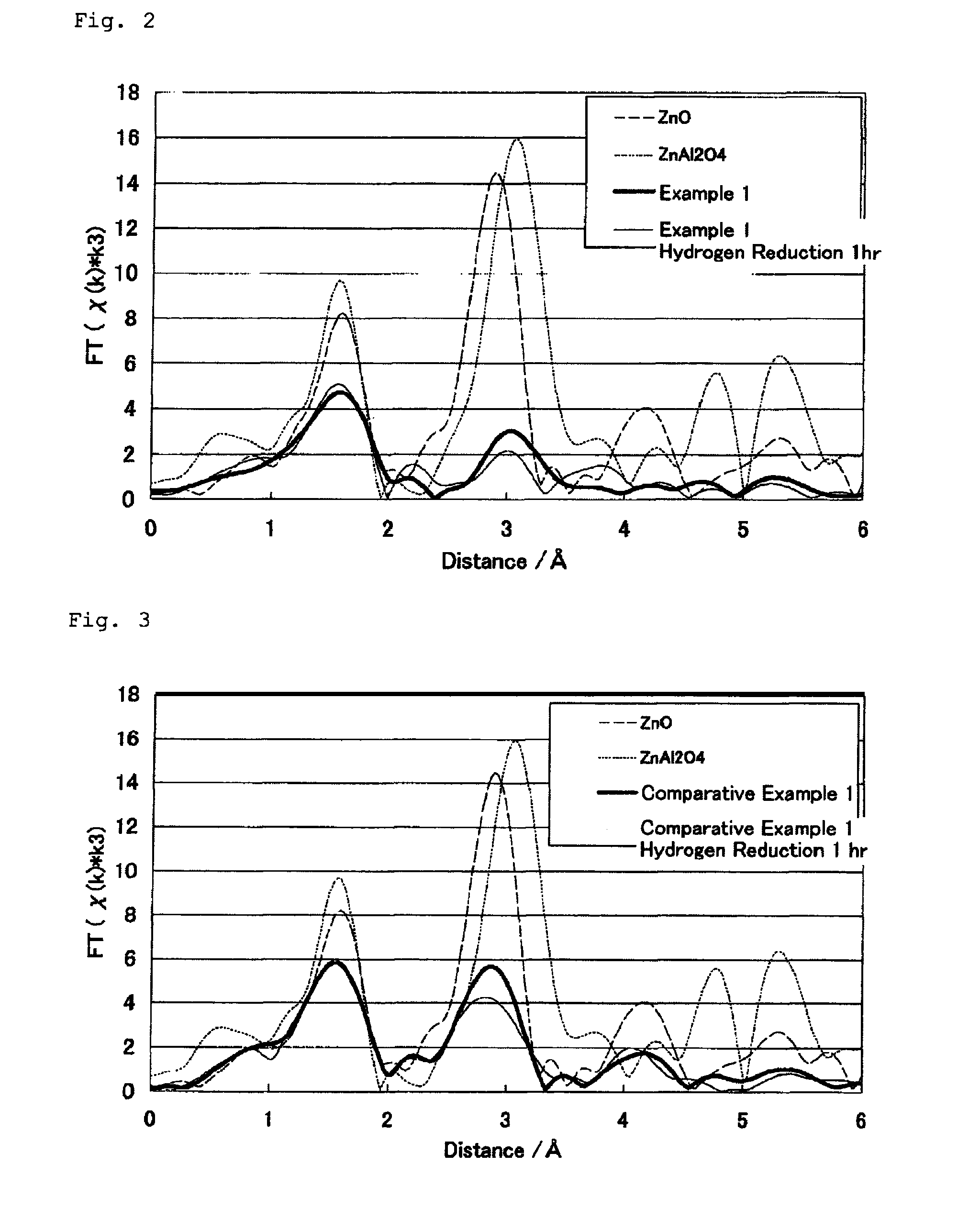Catalyst for carbon monoxide conversion and method of carbon monoxide modification with the same
a carbon monoxide and catalyst technology, applied in the direction of physical/chemical process catalysts, sustainable manufacturing/processing, separation processes, etc., can solve the problems of inactivation of catalyst, not still on satisfactory durability level, and low activity of catalyst at low temperature, so as to improve the activity and durability. , the effect of lowering the activity
- Summary
- Abstract
- Description
- Claims
- Application Information
AI Technical Summary
Benefits of technology
Problems solved by technology
Method used
Image
Examples
example 1
[0067]Copper nitrate 3-hydrate (94.4 g), zinc nitrate 6-hydrate (37.4 g) and aluminum nitrate 9-hydrate (110.0 g) were put into water (1 L) to prepare a solution (A). A 2 N solution of sodium hydroxide was prepared. The solution (A) and the sodium hydroxide solution were simultaneously introduced dropwise into a container filled with water (300 mL) at 55° C. During the introduction, the precipitate was stirred and kept at 55° C., and the dropping speed of the sodium hydroxide solution was controlled so that the pH of the precipitate could be from 9.0 to 9.5. The precipitate was collected by filtration, and fully washed with water. Thus collected, the precipitate was dried at 120° C., and then calcined at 350° C. for 3 hours to give a catalyst. The composition of the catalyst was: 55.3% by mass of copper oxide, 19.2% by mass of zinc oxide and 25.4% by mass of aluminum oxide. The catalyst was shaped under compression, ground and formed into particles of from 0.5 to 1 mm in size.
example 2
[0068]A catalyst was prepared in the same manner as in Example 1, for which, however, the pH of the precipitate was kept to be from 11 to 11.5. The composition of the catalyst was: 62.9% by mass of copper oxide, 21.3% by mass of zinc oxide and 15.7% by mass of aluminum oxide.
example 3
[0069]A catalyst was prepared in the same manner as in Example 1, for which, however, the pH of the precipitate was kept to be from 10 to 10.5. The composition of the catalyst was: 58.8% by mass of copper oxide, 21.0% by mass of zinc oxide and 20.2% by mass of aluminum oxide.
PUM
| Property | Measurement | Unit |
|---|---|---|
| diameter | aaaaa | aaaaa |
| specific surface area | aaaaa | aaaaa |
| diameter | aaaaa | aaaaa |
Abstract
Description
Claims
Application Information
 Login to View More
Login to View More - R&D
- Intellectual Property
- Life Sciences
- Materials
- Tech Scout
- Unparalleled Data Quality
- Higher Quality Content
- 60% Fewer Hallucinations
Browse by: Latest US Patents, China's latest patents, Technical Efficacy Thesaurus, Application Domain, Technology Topic, Popular Technical Reports.
© 2025 PatSnap. All rights reserved.Legal|Privacy policy|Modern Slavery Act Transparency Statement|Sitemap|About US| Contact US: help@patsnap.com


